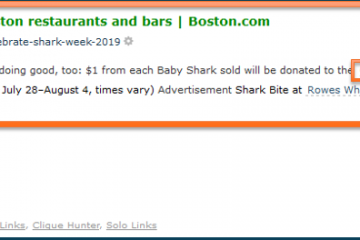My company, Receptional Internet Marketing are now making use of a new Google product called Website Optimizer. I am at a conference in Dublin where Jon Myers and Russell Sutton from Conversion Works are talking about landing page optimization.
I know that Russell is one of the few Google Optimizer professionals in the country (we have Nick Gaunt at Receptional) but up first was Jon Myers who is from Mediavest. Like Receptional, Mediavest is a Google Certified Adwords company. Their presentations give a compelling case for using this technology.
Jon talked a little about Website Optimiser, but then really started to concentrate on the “quality score” metric in Google Adwords. He pointed out the need to ensure that the quality score of your advert is “good” or “great”.
To improve your Adwords campaign, you can test different landing pages for your adverts. Within the Google Adwords system, you can set Google up to alternately send traffic to first the home page and then alternately the product specific page, for example, and Google helps to tell you which page engages the user better and – assuming you have conversion tracking set up in Adwords – you can work out which page generates a higher return on investment.
Jon also noted a few other tools. www.usertesting.com was recommended as well as a particular favourite of Receptional – crazyegg.com. Jon also noted that www.conversion-rates-expert.com has all the decent free tools listed in one place for conversion and landing page testing.
Jon than went on to the main course – A:B Testing and Multivariate testing and used a case study of Skype, who tested three different layouts for their “buy” page (which is pretty close to their home page). Using Google’s website Optimizer, they were able to randomize the three variants for the users and track the orders and revenues generated from the three layouts. The audience were asked to guess which page worked best… and most got it wrong.
Jon showed some nice screenshots from Website optimizer that showed how you can easily drill down and understand the effects of what you test, but did warn about the issues of some mathematical principals surrounding test using limited amounts of data.
Jon feels times are changing and that the marketer is really starting to get in control of the message from search, but you only have 1.8 seconds to attract your user from search these days. This means that you now need to start treating Google itself as a landing page. Local business listings in Google can have phone numbers ON the Google results, for example, meaning that now your customer doesn’t even have to come to your wesbite to convert.
As an aside to Jon’s presentation, Receptional have a number of technologies that allow us to track users by ohone number – one of which can even tie phone numbers into Google Analytics results.
Russell came on next. His business really only concentrates on conversions, not traffic generation. He started by asking the question: “What’s in it for you”? and said that it is all about outcomes – in terms of money or actions or market share or any other chosen metric. Knowing what you want to get “more of” is key to knowing what to test.
Russel; says that when you know what you want more of, you then need to use analytics to find the pain. (Receptional has Google analytics and Yahoo analytics expertise in-house). He took an example from Google analytics which clearly showed two pages that had a much higer bounce rate on a site than any other and chose these to start testing variations. He pointed out that the higher the traffic to those pages, the more the pain for your business.
He recommended starting with a super small test to get used to the Google Website Optimiser technology. You then need a hypothesis of why you think a particular page may be broken. You then should be bold – try some changes that look really different and test the outcomes.
Russell used a courier company case study. The home page had a huge bounce rate and their hypothesis was that the “get a quote” button was tiny. They then came up with 8 variations on a theme – not just one. Again – the audience was asked which variation worked best. It turned out again that we all guessed wrong.
The winning result increased the click through to the quote page by 101%.
Russell and Jon’s presentations – together with Receptional’s own experiences – show that Google optimizer can make an incredible difference to your buttom line. The maths is compelling. At Receptional, Nick Gaunt has taken on this specialism and has taken the Google website optimizer exams. If you would like to contact him, you can do so via www.receptional.com/contact .

1 Comment
Jon Myers · 1st April 2009 at 3:02 pm
Hi Dixon, thanks for a great write up and coverage of the session.